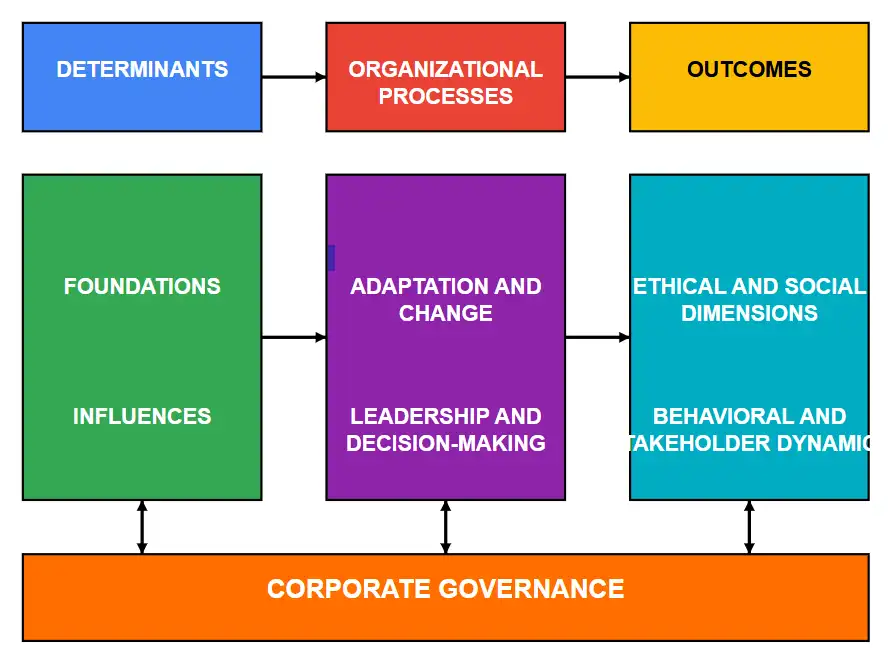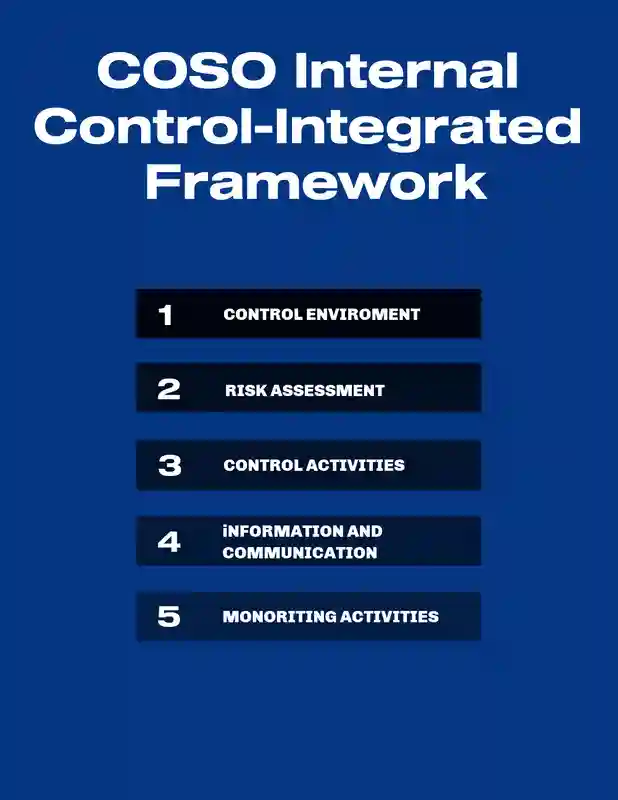Introduction to Securities Class Action Lawsuits
- Omissions in financial statements: Are an absoulte trigger litigation.
- Securities litigation: Refers to the legal proceedings initiated by investors against a company for issues related to financial misrepresentation, fraud, or other securities violations.
- Purpose: serves as a mechanism to hold companies accountable for their financial reporting and disclosure practices.
- Lack of Transparency: As financial markets have evolved, the expectations for transparency and accuracy in financial statements have increased significantly.
- Investor Reliance: Investors rely heavily on these documents to make informed decisions, and any deviation from the truth can lead to substantial financial losses, prompting legal action.
- Complexity: The prevalence of securities litigation has risen in tandem with the complexity of financial instruments and global trading environments.
- Susceptible to Omissions: As companies grow and diversify their operations, the intricacies of their financial statements also grow, making them susceptible to errors or omissions.
- Legal Dispute: This complexity can create fertile ground for disputes, especially when discrepancies are identified.
- Regulations: The legal landscape is further complicated by the varied regulations and standards that govern financial disclosures across different jurisdictions, demanding meticulous attention to compliance from corporations.

Omissions in Financial Statements: The Foundation of Litigation
- Omissions in financial statements represent one of the most significant triggers for securities litigation.
- These omissions occur when companies fail to disclose material information that reasonable investors would consider important in making investment decisions.
- The 2024 Supreme Court decision in Macquarie Infrastructure Corp. v. Moab Partners, L.P. fundamentally reshaped the pleading standards for omissions in private securities fraud actions, establishing that plaintiffs must demonstrate a specific duty to disclose the omitted information.
Types of Material Omissions
- Material omissions can include:
- Undisclosed liabilities that significantly impact financial position
- Hidden related-party transactions that create conflicts of interest
- Failure to report regulatory violations or pending investigations
- Concealment of operational challenges affecting future performance
- These omissions become particularly problematic when they mask underlying accounting fraud, creating a cascade effect that amplifies investor losses and legal exposure.
The Anatomy of Securities Class Action Lawsuits
- Securities class action lawsuits provide investors with a powerful collective legal remedy when individual claims would be impractical due to the widespread nature of the alleged misconduct.
- These lawsuits typically arise when companies engage in financial misstatements that artificially inflate stock prices, creating market bubbles that eventually burst when the truth emerges.
Elements of Securties Class Action Lawsuits
- The mechanics of these lawsuits involve several critical elements:
- Loss Causation Requirements: Plaintiffs must demonstrate a direct causal link between the alleged misrepresentation and their economic losses. This requires showing that the stock price declined specifically due to the revelation of the previously concealed information, not general market conditions.
- Class Certification Standards: Courts must determine whether the proposed class meets the requirements of numerosity, commonality, typicality, and adequacy of representation. This process ensures that the collective action serves the interests of all affected investors.
- Damages Calculation: Economic experts typically perform complex analyses to determine the artificial inflation in stock prices during the class period, using event studies and other sophisticated methodologies to quantify investor losses.
Corporate Governance Failures and Compliance Challenges
- Corporate governance failures often serve as the underlying catalyst for securities litigation.
- When boards of directors fail to exercise proper oversight, or when management prioritizes short-term gains over long-term sustainability, the resulting compliance failures can expose companies to significant legal risk.
- Regulatory compliance has become increasingly complex as companies navigate evolving standards across multiple jurisdictions.
New Trensds for Regulatory Bodies
- The Securities and Exchange Commission continues to enhance its enforcement capabilities, with particular focus on:
- ESG-related disclosures and their accuracy
- Cybersecurity incident reporting requirements
- AI and technology risk disclosures as companies integrate new technologies
- Climate-related financial disclosures under emerging regulations
Corporate Scandals as Litigation Catalysts
- Corporate scandals provide compelling case studies demonstrating how securities litigation unfolds in practice.
- The Volkswagen “Dieselgate” scandal exemplifies how environmental compliance failures can trigger massive securities litigation, resulting in billions in settlements.
- Similarly, accounting scandals at companies like Enron and WorldCom established important legal precedents that continue to influence current litigation strategies.
Predictable Patters
- These scandals typically follow predictable patterns:
- Initial disclosure of potential misconduct
- Market reaction with significant stock price decline
- Regulatory investigation by SEC and other agencies
- Class action filing by investor plaintiffs
- Discovery process revealing the scope of misconduct
- Settlement negotiations or trial proceedings
The Deterrent Effect and Market Integrity
- Moreover, the role of securities litigation extends beyond merely resolving individual disputes.
- It acts as a deterrent against potential misconduct by emphasizing the repercussions of financial misrepresentation.
- The legal precedents set by these cases can influence corporate behavior, encouraging companies to maintain robust internal controls and adhere to stringent reporting standards.
- The interconnected nature of accounting fraud, omissions in financial statements, and corporate governance failures creates a complex web of legal and financial risks.
- Companies that experience compliance failures in one area often discover that these issues cascade into broader securities litigation exposure.
The Role of Experts
- Expert testimony plays a crucial role in these proceedings, as forensic accountants and financial analysts provide critical insights into how alleged misconduct affected market prices and quantify resulting damages.
- These experts must navigate complex questions of market efficiency, materiality, and causation to establish the foundation for investor recoveries.
- Thus, understanding securities litigation is crucial not only for investors but also for companies aiming to safeguard their reputation and ensure long-term sustainability.
- The evolving regulatory landscape, combined with increasingly sophisticated enforcement mechanisms, makes proactive compliance and transparent disclosure practices more important than ever for corporate success and investor protection.
Financial Statement Accuracy and Its Legal Ramifications
- Accurate financial statements are the cornerstone of effective corporate governance and investor trust.
- They provide a transparent view of a company’s financial health, enabling stakeholders to make well-informed decisions.
- However, the landscape of corporate financial reporting has become increasingly complex, with omissions in financial statements and accounting fraud posing significant threats to market integrity and investor protection.
The Devastating Impact of Financial Misstatements
- Financial misstatements and deliberate omissions create a ripple effect that extends far beyond individual companies.
- When corporations fail to disclose material information or manipulate their financial data, they distort the true picture of their performance, leading to misguided investment strategies and substantial financial losses for investors.
- These compliance failures have triggered numerous securities class action lawsuits, fundamentally reshaping how companies approach financial disclosure.
Scrutinizing Financial Statements for Omissions
- Investors and analysts scrutinize financial statements to assess business viability and profitability.
- Key metrics such as revenue, expenses, assets, and liabilities form the foundation of analytical models used to forecast future performance.
- Any errors or omissions in these figures can skew investment decisions, resulting in significant economic harm.
- The consequences of such corporate scandals extend beyond immediate financial losses, eroding market confidence and disrupting efficient capital allocation.
Securities Litigation: The Legal Response to Corporate Misconduct
- The rise in securities litigation reflects the market’s demand for accountability when companies fail their disclosure obligations.
- Securities class action lawsuits have become a powerful mechanism for investors to seek redress when they suffer losses due to misleading statements or material omissions.
- These legal actions serve multiple purposes: compensating harmed investors, deterring future misconduct, and reinforcing the importance of transparent financial reporting.
High Profile Accounting Scandals
- Recent high-profile cases demonstrate the severe financial and reputational consequences companies face when their financial reporting falls short of regulatory standards.
- Corporate defendants in securities fraud cases often face substantial settlements, regulatory sanctions, and long-lasting damage to their market credibility.
- The threat of litigation has fundamentally altered how companies approach financial disclosure, with many implementing enhanced internal controls and compliance monitoring systems.
Regulatory Compliance in an Evolving Landscape
- Regulatory compliance requirements continue to evolve in response to emerging risks and technological advances.
- Regulatory bodies, such as the SEC in the United States, mandate comprehensive and truthful disclosure of financial information.
- Non-compliance can result in severe penalties, including substantial fines, sanctions, and in extreme cases, criminal prosecution of corporate executives.
- The complexity of modern business operations has made compliance increasingly challenging.
- Companies must navigate intricate accounting standards, evolving disclosure requirements, and heightened scrutiny from regulators and investors alike.
- Corporate governance frameworks have adapted to address these challenges, with boards of directors taking more active roles in overseeing financial reporting processes and risk management systems.
The Intersection of Technology and Compliance
- Modern financial reporting faces new challenges as companies increasingly rely on complex financial instruments, global operations, and emerging technologies.
- These developments create additional opportunities for omissions in financial statements and increase the risk of accounting fraud.
- Companies must now consider how artificial intelligence, blockchain technology, and other innovations affect their disclosure obligations and internal control systems.
- The regulatory response to these technological developments continues to evolve, with authorities working to ensure that disclosure requirements keep pace with business innovation.
- Companies that fail to adapt their compliance programs to address these emerging risks face increased exposure to securities litigation and regulatory enforcement actions.
Building Robust Corporate Governance Systems
Effective corporate governance requires more than mere compliance with minimum regulatory standards.
Leading companies implement comprehensive risk management systems that proactively identify potential disclosure issues and address them before they result in material omissions or misstatements.
These systems typically include regular internal audits, enhanced board oversight, and robust whistleblower protections.
The cost of implementing comprehensive compliance systems pales in comparison to the potential consequences of compliance failures.
The Cost of Reputational Damaages
- Companies that experience corporate scandals often face years of litigation, regulatory scrutiny, and damaged relationships with investors, customers, and business partners.
- The reputational damage from financial reporting failures can persist long after legal settlements are reached.
- In today’s rapidly evolving financial landscape, companies must remain vigilant and proactive in their disclosure practices to navigate regulatory complexities effectively.
- The integrity of financial reporting remains paramount for maintaining market confidence, ensuring efficient capital allocation, and protecting investor interests.
- As regulatory requirements continue to evolve and enforcement actions become more sophisticated, companies that prioritize transparency and accuracy in their financial statements will be best positioned to maintain stakeholder trust and avoid the severe consequences of securities litigation.
Understanding Omissions in Financial Statements and Their Legal Consequences
- Omissions in financial statements represent one of the most insidious forms of corporate misconduct, often serving as the foundation for securities class action lawsuits and regulatory enforcement actions.
- These deliberate exclusions of material information can devastate investor confidence and trigger widespread corporate scandals that reshape entire industries.
The Hidden Dangers of Contingent Liabilities
- Contingent liabilities represent potential financial obligations that may materialize based on future events, yet many companies systematically exclude these critical details from their financial disclosures.
- This practice constitutes a fundamental breach of regulatory compliance standards and frequently becomes the centerpiece of securities litigation.
- When companies fail to disclose pending litigation, environmental cleanup costs, or warranty obligations, investors cannot accurately assess the true financial risk profile of their investments.
Omissions Constitute Securities Fraud
- The consequences extend far beyond simple accounting irregularities—these omissions often constitute accounting fraud under federal securities laws.
- Consider the case of major pharmaceutical companies that failed to disclose potential liabilities from ongoing FDA investigations.
- These compliance failures not only misled investors about future cash flows but also violated the fundamental principle that investors deserve access to all material information affecting their investment decisions.
- Expert testimony in such cases often demonstrates how proper disclosure of contingent liabilities would have significantly impacted stock valuations and investment decisions.
Related Party Transactions: The Corporate Governance Challenge
- The non-disclosure of related party transactions represents a particularly egregious form of omission that strikes at the heart of corporate governance principles.
- These transactions—whether involving executive compensation arrangements, family member business dealings, or subsidiary relationships—can fundamentally alter a company’s financial position while remaining completely invisible to investors.
- Securities class action lawsuits frequently target companies that engage in undisclosed related party transactions because these arrangements often involve conflicts of interest that directly harm shareholder value.
- When executives use company resources for personal benefit or engage in self-dealing without proper disclosure, they violate their fiduciary duties and expose the company to significant legal liability.
- The regulatory framework surrounding related party disclosures has evolved significantly following high-profile corporate scandals.
- The Sarbanes-Oxley Act of 2002 and subsequent SEC regulations now require detailed disclosure of these relationships, yet compliance failures continue to occur with alarming frequency.
- Companies that attempt to structure transactions to avoid disclosure requirements often find themselves facing both regulatory enforcement actions and private securities litigation.
Material Events and the Duty of Timely Disclosure
- The exclusion of material events from financial reporting represents perhaps the most straightforward form of omission, yet it remains a persistent source of securities litigation.
- Companies must disclose significant legal proceedings, management changes, operational shifts, and other developments that could influence investor decision-making processes.
- Accounting fraud cases often involve companies that deliberately delayed or omitted disclosure of adverse developments while insiders sold their shares at artificially inflated prices.
- These scenarios create classic “fraud on the market” claims where investors can demonstrate they purchased securities at prices that did not reflect the company’s true financial condition.
- The legal standard for materiality requires companies to disclose information that a reasonable investor would consider important in making investment decisions.
- Courts consistently hold that companies cannot selectively disclose positive developments while concealing negative information, as this practice fundamentally undermines market integrity and investor confidence.
Regulatory Enforcement and Compliance Failures
- Regulatory compliance in financial reporting extends beyond simple adherence to accounting standards—it requires a comprehensive commitment to transparency and investor protection.
- The SEC’s enforcement division actively pursues cases involving material omissions, often resulting in significant monetary penalties and structural reforms.
- Recent enforcement actions demonstrate the severe consequences of compliance failures in financial reporting.
- Companies face not only regulatory sanctions but also increased exposure to securities class action lawsuits filed by investors who suffered losses due to inadequate disclosures.
- These parallel proceedings can result in hundreds of millions of dollars in combined penalties and settlement payments.
- The regulatory landscape continues to evolve, with new disclosure requirements addressing emerging risks such as cybersecurity threats, climate change impacts, and artificial intelligence implementations.
- Companies that fail to adapt their disclosure practices to these evolving standards face increased litigation risk and regulatory scrutiny.
Corporate Scandals and Their Lasting Impact
- High-profile corporate scandals involving financial reporting omissions have fundamentally reshaped the legal and regulatory landscape.
- From Enron’s off-balance-sheet entities to Wells Fargo’s undisclosed sales practices, these cases demonstrate how systematic omissions can destroy shareholder value and undermine market confidence.
- These scandals typically involve multiple forms of omissions working in concert—undisclosed contingent liabilities, concealed related party transactions, and delayed disclosure of material adverse developments.
- The resulting securities litigation often reveals patterns of deliberate deception that extend throughout corporate management and professional service providers.
Protecting Market Integrity Through Comprehensive Disclosure
- Omissions in financial statements represent a fundamental threat to market integrity that requires vigilant oversight from regulators, auditors, and investors.
- The legal framework surrounding disclosure obligations continues to evolve, but the core principle remains constant: investors deserve access to all material information necessary to make informed investment decisions.
- Companies that prioritize comprehensive disclosure practices not only reduce their exposure to securities litigation but also build stronger relationships with investors and stakeholders.
- Conversely, those that engage in selective disclosure or deliberate omissions face increasingly severe legal and financial consequences.
- For investors who have suffered losses due to material omissions in financial reporting, securities class action lawsuits provide an essential mechanism for recovery and corporate accountability.
- Understanding these disclosure obligations and their enforcement helps investors identify potential red flags and protect their investment interests in an increasingly complex financial marketplace.
- The ongoing evolution of disclosure requirements and enforcement practices ensures that omissions in financial statements will remain a critical focus for regulators, attorneys, and investors seeking to maintain market integrity and protect shareholder rights.

Omissions in Financial Statements: Legal Implications and Investor Protection
- Omissions in Financial Statements represent one of the most insidious forms of Accounting Fraud, creating substantial risks for investors and triggering complex Securities Litigation.
- Tese deliberate or negligent exclusions of material information can fundamentally distort a company’s financial position, leading to Securities Class Action Lawsuits and severe Compliance Failures.
Traditional Categories of Financial Reporting Omissions
Contingent Liabilities: The Hidden Time Bombs
The failure to disclose contingent liabilities remains a cornerstone of securities fraud cases.
These potential obligations—ranging from pending litigation to environmental cleanup costs—can dramatically alter a company’s financial trajectory.
Regulatory Compliance under Generally Accepted Accounting Principles (GAAP) requires disclosure when contingent liabilities are probable and reasonably estimable.
When companies omit these disclosures, investors face Corporate Scandals that can devastate stock prices overnight.
The infamous Enron case exemplifies how concealed contingent liabilities through special purpose entities led to one of the largest Securities Class Action Lawsuits in history, ultimately resulting in billions in investor losses.
Related Party Transactions: Concealed Conflicts of Interest
- Omissions in Financial Statements involving related party transactions create fertile ground for Accounting Fraud.
- These transactions—whether with executives, board members, or affiliated entities—must be disclosed to prevent conflicts of interest from undermining Corporate Governance.
- The SEC has consistently emphasized that undisclosed related party transactions violate federal securities laws.
- Companies that fail to report these relationships often face Securities Litigation alleging that investors were misled about the true nature of corporate dealings.
- Recent cases demonstrate how executive self-dealing, when concealed through omissions, can trigger substantial legal liability and regulatory sanctions.
Material Events and Operational Developments
- Beyond traditional financial metrics, companies must disclose material events that could influence investor decision-making.
- Compliance Failures in this area often involve omitting information about regulatory investigations, significant customer losses, or operational disruptions.
- Corporate Scandals frequently emerge when companies fail to timely disclose material developments, creating information asymmetries that disadvantage retail investors.
- The “materiality” standard requires disclosure of information that a reasonable investor would consider important—a threshold that courts interpret broadly in Securities Litigation contexts.
Emerging Categories of Critical Omissions
Off-Balance Sheet Arrangements and Special Purpose Entities
- Modern Accounting Fraud increasingly involves sophisticated off-balance sheet arrangements that obscure true financial obligations.
- Companies may omit disclosures about special purpose entities, variable interest entities, or complex derivative arrangements that create substantial economic exposure.
- These Omissions in Financial Statements violate Regulatory Compliance requirements under Sarbanes-Oxley Act provisions, which mandate enhanced disclosure of off-balance sheet arrangements.
- Failure to provide adequate disclosure often results in Securities Class Action Lawsuits alleging that investors were deceived about the company’s true financial condition.
Executive Compensation and Governance Failures
Corporate Governance omissions involving executive compensation arrangements represent a growing area of Securities Litigation.
- Companies must disclose not only compensation amounts but also the rationale behind compensation decisions, performance metrics, and potential conflicts of interest.
- Compliance Failures in executive compensation disclosure often coincide with broader governance breakdowns, creating compound liability for companies.
- Recent regulatory guidance emphasizes that omissions regarding executive compensation can constitute securities fraud when they mislead investors about management incentives and corporate priorities.
Cybersecurity Incidents and Data Breaches
- Contemporary Corporate Scandals increasingly involve omitted disclosures about cybersecurity incidents, data breaches, and information security vulnerabilities.
- The SEC has established clear guidance requiring disclosure of material cybersecurity incidents, yet many companies continue to omit crucial information about their cyber risk exposure.
- These Omissions in Financial Statements create particular liability because cybersecurity incidents can have immediate and long-term financial consequences.
- Securities Litigation in this area often focuses on whether companies adequately disclosed their cybersecurity preparedness and incident response capabilities.
Legal Consequences and Regulatory Framework
Regulatory Compliance failures involving financial statement omissions trigger multiple enforcement mechanisms. The SEC can pursue civil enforcement actions, while the Department of Justice may initiate criminal proceedings for willful violations.
Additionally, private investors can file Securities Class Action Lawsuits seeking damages for losses caused by misleading omissions.
The legal standard for omissions liability requires proof that companies had a duty to disclose omitted information and that the omission made other statements misleading.
This framework, established through decades of Securities Litigation, creates substantial exposure for companies that fail to meet disclosure obligations.
Corporate Governance failures often compound omissions liability by demonstrating inadequate internal controls and oversight mechanisms.
Companies with weak governance structures face enhanced scrutiny from regulators and increased vulnerability in Securities Class Action Lawsuits.
Investor Protection and Market Integrity
- Omissions in Financial Statements undermine fundamental market integrity by creating information asymmetries between corporate insiders and public investors.
- Accounting Fraud through omissions distorts price discovery mechanisms and erodes investor confidence in capital markets.
- Effective Regulatory Compliance programs must address omissions risk through comprehensive disclosure controls and procedures.
- Companies that prioritize transparency and proactive disclosure can minimize exposure to Securities Litigation while maintaining investor trust.
- The consequences of Compliance Failures extend beyond immediate legal liability to include reputational damage, increased regulatory scrutiny, and elevated litigation risk.
- Corporate Scandals involving omissions often trigger broader investigations that can uncover additional compliance deficiencies and governance failures.
Case Studies: Notable Securities Litigation Cases
Examining notable securities litigation cases provides valuable insights into the potential ramifications of financial statement omissions and accounting fraud.
These landmark cases demonstrate how compliance failures can trigger massive securities class action lawsuits and reshape corporate governance standards across industries.
The Enron Catastrophe: A Blueprint for Corporate Deception
- The Enron scandal remains the quintessential example of how omissions in financial statements can devastate markets and investors.
- The energy company employed sophisticated accounting fraud schemes, including the use of special purpose entities (SPEs) to hide over $1 billion in debt from its balance sheets.
- These corporate scandals involved deliberate omissions of critical financial information that painted a false picture of the company’s financial health.
- Key Legal Precedents Established:
- Enhanced auditor independence requirements under the Sarbanes-Oxley Act
- Stricter CEO and CFO certification of financial statements
- Whistleblower protection provisions that encouraged internal reporting of fraud
- The securities litigation that followed resulted in one of the largest bankruptcy proceedings in U.S. history, with investors losing approximately $74 billion in market value.
- The case established crucial precedents for regulatory compliance, particularly regarding the disclosure of off-balance-sheet transactions and the independence of external auditors.
Timeline: The Rise and Fall of Enron Corporation
1985
Enron Corporation emerges from the merger of Houston Natural Gas Co. and InterNorth Inc., establishing what would become one of America’s most notorious corporate entities.
1995
Fortune magazine recognizes Enron as “America’s Most Innovative Company” – a prestigious title the energy giant would claim for six straight years, cementing its reputation as an industry pioneer.
1998
Andrew Fastow ascends to the position of Chief Financial Officer, where he would later orchestrate an elaborate web of off-balance-sheet entities designed to conceal the company’s mounting financial losses.
2000
Enron’s stock price reaches unprecedented heights, soaring to an all-time peak of $90.56 per share, reflecting investor confidence in the company’s apparent success.
February 12, 2001
Jeffrey Skilling assumes the role of Chief Executive Officer, replacing Kenneth Lay, though Lay continues his involvement as a board member.
August 14, 2001
In a shocking turn of events, Skilling abruptly resigns from his CEO position, with Lay resuming leadership duties. Simultaneously, Enron’s broadband unit reports devastating losses of $137 million, triggering analyst concerns and causing stock prices to plummet to a 52-week low of $39.95.
October 12, 2001
Arthur Andersen’s legal team instructs auditors to destroy Enron documentation, retaining only essential corporate records – a decision that would later prove catastrophic.
October 16, 2001
Enron discloses catastrophic financial results: a $618 million quarterly loss coupled with a staggering $1.2 billion write-down. The stock price continues its downward spiral to $38.84.
October 22, 2001
The company announces it faces investigation by the Securities and Exchange Commission, sending shares tumbling to approximately $20.75 following the revelation.
November 8, 2001
Enron makes a stunning admission: the company has been artificially inflating earnings by roughly $586 million since 1997, revealing the extent of its financial manipulation.
November 29, 2001
Arthur Andersen, Enron’s accounting firm, becomes entangled in the expanding scandal as SEC investigators broaden their probe to include the auditing giant.
December 2, 2001
Enron files for Chapter 11 bankruptcy protection, marking one of the largest corporate failures in U.S. history. Trading closes with shares valued at a mere $0.26.
January 9, 2002
The U.S. Department of Justice initiates criminal proceedings, escalating the matter from civil to criminal investigation.
January 15, 2002
The New York Stock Exchange suspends Enron trading, officially ending the company’s presence on the nation’s premier stock market.
June 15, 2002
The WorldCom Collapse Under the Weight of an $11 Billon Accounting Fraud
- Arthur Andersen faces justice as the firm is convicted of obstruction of justice charges, effectively ending its role as one of the “Big Five” accounting firms and serving as a stark reminder of the scandal’s far-reaching consequences.
- The collapse of WorldCom was caused by an $11 billion accounting fraud carried out from 1999 to 2002.
- The scheme involved improperly categorizing billions of dollars in “line costs”—the fees WorldCom paid to other telecommunications companies for network access—as capital expenditures instead of operating expenses.
- This manipulation created the false appearance of a profitable and fast-growing company, which kept its stock price inflated and met Wall Street’s expectations.
- The fraud explained costs, from the income statement to the balance sheet, WorldCom was able to inflate its current profits.
- Instead of deducting these costs immediately, the company treated them as long-term investments that could be depreciated over many years.
- Inflated profits and revenue: The fraudulent accounting turned large quarterly losses into reported profits. The company also inflated its revenue by recording false transactions and improperly booking revenue from capacity swaps with other telecom companies.
- Misuse of reserve accounts: WorldCom’s executives also used reserve accounts to boost reported earnings and smooth out financial performance, further misleading investors.
The key players and discovery
- The fraud was directed by senior management, including CEO Bernard Ebbers and CFO Scott Sullivan, who felt immense pressure to maintain high stock prices and meet aggressive growth targets.
- However, internal auditor Cynthia Cooper and her team uncovered the deception. Despite facing pressure to halt their investigation, they persisted and eventually reported their findings to the company’s audit committee.
The fallout
- Bankruptcy and asset inflation: After the fraud was exposed in 2002, WorldCom filed for Chapter 11 bankruptcy in what was then the largest such filing in U.S. history. Investigations revealed that the company had inflated its assets by more than $11 billion.
- Penalties for executives: Both Ebbers and Sullivan were convicted for their roles in the scandal, receiving prison sentences. Other accounting executives involved also pleaded guilty.
- Legacy and regulation: Coming on the heels of the Enron scandal, the WorldCom collapse led to the passage of the Sarbanes-Oxley Act of 2002. The law was designed to prevent similar corporate fraud by strengthening corporate governance, requiring independent auditors, and increasing penalties for executives who misrepresent financial statements.
- Acquisition by Verizon: After emerging from bankruptcy and rebranding as MCI, the company was ultimately acquired by Verizon Communications in 2005.
Volkswagen’s Global Deception: Environmental Compliance Meets Securities Law
- The Volkswagen emissions scandal, also known as “Dieselgate,” centered on the company’s installation of illegal “defeat devices” that allowed its diesel vehicles to cheat on emissions tests.
- The scandal, which came to light in 2015, had profound consequences for Volkswagen’s finances, leadership, and public reputation.
- It also highlighted the growing legal and financial risks associated with poor Environmental, Social, and Governance (ESG) practices for corporations across industries.
The scandal and its fallout
- The “defeat device”: Volkswagen engineers programmed software to detect when a vehicle was undergoing an emissions test and activate its full emission controls. During real-world driving, these controls were turned off, causing the cars to emit up to 40 times the legal limit of nitrogen oxides (NOx). This cheating enabled the company to advertise its diesel cars as “clean” while masking their actual pollution levels.
- Massive scale: The software was installed in approximately 11 million vehicles worldwide, including VW, Audi, and Porsche models, affecting hundreds of thousands of cars in the U.S. alone.
- Executive departures: Shortly after the scandal broke, Volkswagen’s CEO, Martin Winterkorn, resigned. Numerous other executives and managers were suspended, indicted, or faced criminal charges in the U.S. and Germany
Legal and financial ramifications
- Multibillion-dollar settlements: The scandal cost Volkswagen over $30 billion in penalties, settlements, and other costs. This included a $14.7 billion settlement in the U.S. to compensate consumers, a $2.7 billion environmental mitigation trust, and a $2 billion investment in zero-emissions vehicle infrastructure.
- Criminal charges: In the U.S., Volkswagen pleaded guilty to three felony charges and paid a $2.8 billion criminal penalty. Several VW employees and executives received prison sentences for their roles in the conspiracy.
- Securities fraud: Volkswagen also faced securities fraud charges from the SEC for misleading investors during bond offerings in 2014 and 2015. This was particularly relevant as executives knew about the emission violations while touting the company’s environmental and regulatory compliance.
- Operational costs: Beyond fines, VW incurred immense costs from vehicle buyback and lease termination programs, recalls, and fixes.
Relevance to ESG disclosure and securities litigation
- Expanded definition of “materiality”: The case demonstrated that non-traditional financial factors, like environmental and regulatory compliance, can be “material” to investors. Lying about environmental performance had a dramatic and direct effect on Volkswagen’s stock price and long-term financial health.
- ESG as a core risk factor: The scandal showed that a company’s public image regarding sustainability and social responsibility directly affects its value. It is no longer enough to “greenwash” an image; deep-seated failures in governance and environmental control pose a material risk to investors.
- Increased scrutiny: In the wake of the scandal, regulators and investors increased their scrutiny of other automakers and industries. This led to more rigorous real-world emissions testing protocols and increased attention to potential cheating.
- Spillover effects on the market: Beyond Volkswagen, the scandal had negative “spillover effects” on the stock and bond values of other automakers and suppliers, particularly in Europe. This suggested a broader reassessment of risk within the automotive sector.
- ESG litigation risk: The Volkswagen case served as a high-profile precedent for securities litigation based on fraudulent ESG representations. It demonstrated that securities fraud law could be effectively used to prosecute cases where false statements about environmental compliance led to investor losses.
Wells Fargo: Incentive-Driven Fraud and Cultural Failures
- The Wells Fargo fake accounts scandal, involving the creation of millions of unauthorized accounts between 2009 and 2016, highlights critic al lessons regarding misaligned incentives and corporate ethics.
- It revealed how a toxic sales culture can compromise risk management and internal controls, causing severe repercussions for customers, investors, and the financial industry as a whole.
Lessons for corporate governance
- Emphasis on ethical leadership: The scandal demonstrated how leadership failures can foster a high-pressure environment that prioritizes profits over integrity. The subsequent leadership overhaul underscored the necessity of senior management championing an ethical culture and taking accountability.
- Need for effective oversight: The board of directors‘ failure to act in time and an insufficient control environment allowed misconduct to persist for years. This highlighted the importance of a board’s active engagement in risk oversight and a governance framework that empowers robust internal controls and audits.
- Integrated risk and compliance: The scandal exposed severe weaknesses in Wells Fargo’s enterprise risk management (ERM). It taught that risk and compliance cannot be treated as isolated functions but must be integrated into all business operations, supported by a system of checks and balances.
- Protections for whistleblowers: Many employees who tried to report the fraudulent activity were ignored or fired. The outcome emphasizes the need for strong whistleblower protections and transparent reporting policies to allow for the early detection of fraud without fear of retaliation.
Lessons for investors
- Scrutinize aggressive sales cultures: The “Eight is Great” sales mantra at Wells Fargo should have been a red flag to investors that the bank’s growth strategy was based on potentially unsustainable and aggressive targets. The scandal taught investors to be wary of companies that prioritize short-term sales metrics at the expense of sustainable business practices.
- Evaluate incentive structures: Compensation plans that over-emphasize sales volume and do not consider the quality of business can encourage misconduct. Investors should analyze incentive structures to ensure they are aligned with ethical behavior and long-term value creation.
- Look beyond financial reports: The scandal revealed that even a company with a strong reputation for financial performance can have deep-seated cultural problems. Investors should pay attention to disclosures regarding cultural and operational risks, as well as indications of low employee morale or high turnover, which can signal underlying issues.
- Consider reputational risk: Wells Fargo’s stock price plummeted and customer loyalty eroded significantly after the scandal broke. This shows investors that reputational damage can result in major financial losses and should be considered a material risk.
Lessons for regulatory oversight
- Proactive enforcement is necessary: The scandal demonstrated that regulatory scrutiny was insufficient to detect widespread misconduct over several years. Regulators now recognize the need for more proactive monitoring and enforcement, moving beyond a “checkbox” approach to compliance.
- Empower consumer protection agencies: The Consumer Financial Protection Bureau (CFPB) played a key role in the investigation and issued significant fines. The case highlighted the critical importance of consumer-focused regulators in identifying and punishing practices that harm the public.
- Implement stronger penalties: Regulators imposed several severe penalties on Wells Fargo, including a multi-billion dollar settlement and an unprecedented cap on the bank’s assets from the Federal Reserve. These actions sent a strong signal that systemic fraud carries serious consequences beyond just financial fines and demonstrated that regulators have expanded their tools for punishing misconduct.
- Increased scrutiny of corporate culture: Post-scandal, regulators became more focused on assessing the corporate culture of financial institutions, viewing it as a core component of risk. This established a precedent for regulators to intervene when they see operational and cultural flaws that could lead to consumer harm.
Theranos: The Intersection of Innovation and Deception
The Theranos fraud case represents a modern example of how omissions in financial statements can intersect with technological claims and investor relations. Founder Elizabeth Holmes was convicted of defrauding investors by making false claims about the company’s blood-testing technology while concealing the true state of its operations.
Key Legal Developments:
- Enhanced scrutiny of private company disclosures to investors
- Stricter due diligence requirements for venture capital investments
- Expanded liability for executives making forward-looking statements
Emerging Patterns in Modern Securities Litigation
Recent securities class action lawsuits demonstrate evolving patterns in corporate governance failures and regulatory compliance challenges:
Technology Sector Vulnerabilities
- Data privacy breaches leading to material omissions in risk disclosures
- Artificial intelligence bias creating new categories of operational risk
- Cybersecurity incidents requiring enhanced disclosure protocols
ESG-Related Litigation Trends
- Climate risk omissions in financial statements and investor communications
- Supply chain compliance failures affecting operational and reputational risk
- Social responsibility claims impacting brand value and market position
Regulatory Response and Compliance Evolution
These landmark cases have driven significant regulatory changes that reshape modern corporate governance:
Enhanced Disclosure Requirements:
- Real-time reporting of material events under Form 8-K
- Expanded risk factor disclosures in annual and quarterly reports
- Executive compensation clawback provisions for financial restatements
Strengthened Internal Controls:
- Section 404 compliance under Sarbanes-Oxley Act
- Whistleblower programs with financial incentives for reporting fraud
- Independent audit committee requirements for all public companies
Lessons for Modern Corporate Governance
The evolution of securities litigation through these cases provides critical insights for contemporary corporate governance:
Proactive Compliance Strategies
- Regular risk assessment protocols to identify potential disclosure gaps
- Cross-functional compliance teams integrating legal, finance, and operations
- Third-party auditing of non-financial operational metrics
Cultural Transformation Imperatives
- Tone at the top initiatives emphasizing ethical decision-making
- Incentive alignment ensuring compensation structures don’t encourage fraud
- Transparent communication channels for reporting compliance concerns
The Future Landscape of Securities Litigation
- As securities litigation continues to adapt to address novel forms of accounting fraud and compliance failures. The cases examined here establish foundational principles that guide modern enforcement actions and shape investor protection strategies.
- Emerging Risk Areas:
- Cryptocurrency and digital asset disclosures
- Artificial intelligence bias and algorithmic transparency
- Climate change impact quantification and reporting
- These landmark cases serve as both cautionary tales and educational tools, demonstrating the critical importance of comprehensive regulatory compliance and transparent corporate governance in maintaining market integrity and investor confidence.
How Omissions Impact Investor Trust and Market Stability
Omissions in financial statements represent one of the most insidious forms of accounting fraud, creating far-reaching consequences that extend well beyond individual companies to affect entire market ecosystems.
When investors discover missing or misleading information, their confidence in the company’s management and financial health is significantly undermined.
This erosion of trust can lead to a sell-off of shares, resulting in a decline in stock prices and increased market volatility.
The ripple effect of such actions can destabilize the broader market, affecting other companies and investors who may have no direct connection to the fraudulent entity.
The Legal Landscape of Financial Misstatements
- Financial misstatements and omissions frequently trigger securities litigation, as investors seek recourse through the legal system.
- Securities class action lawsuits have become a primary mechanism for holding corporations accountable when compliance failures result in material omissions from required disclosures.
- These legal actions serve not only to compensate harmed investors but also to establish precedents that deter future misconduct.
- The complexity of proving materiality in omission cases requires sophisticated legal strategies, often involving expert testimony from forensic accountants and market analysts.
- Courts must determine whether the omitted information would have been significant enough to influence a reasonable investor’s decision-making process, a standard that has evolved through decades of securities law jurisprudence.
Corporate Governance Failures and Systemic Risk
- Corporate scandals involving financial statement omissions typically reveal deeper corporate governance deficiencies within organizations.
- When internal controls fail to prevent or detect material omissions, it signals broader institutional problems that can undermine stakeholder confidence across multiple dimensions.
- These governance failures often involve inadequate oversight by boards of directors, insufficient internal audit functions, or cultures that prioritize short-term financial performance over transparency and regulatory compliance.
- Moreover, the loss of investor trust can have long-term implications for a company’s ability to raise capital. Investors are less likely to invest in companies with a history of financial misreporting, leading to higher capital costs and limited access to funding.
- This can hinder a company’s growth prospects and competitive position, further exacerbating its financial challenges. Corporate governance reforms often follow major scandals, but the damage to market confidence can persist for years.
Market-Wide Implications and Regulatory Response
- In addition to affecting individual companies, omissions in financial statements can also have systemic implications for the financial markets.
- Widespread instances of financial misreporting can erode trust in the market as a whole, leading to increased regulatory scrutiny and potential market corrections.
- The interconnected nature of modern financial markets means that compliance failures at major corporations can trigger broader market instability, affecting pension funds, mutual funds, and individual retirement accounts.
- Regulatory compliance frameworks have evolved significantly in response to major corporate scandals, with enhanced disclosure requirements and stricter penalties for violations.
- However, the cat-and-mouse game between regulators and potential violators continues, requiring constant vigilance from oversight bodies and market participants alike.
- Protecting Market Integrity Through Legal Accountability
The Importance of Maintaining Transparency
- Therefore, maintaining transparency and accuracy in financial reporting is essential for sustaining investor confidence and ensuring market stability.
- Companies must prioritize comprehensive and truthful financial disclosures, fostering an environment of accountability and transparency that supports investor confidence and market integrity.
- When accounting fraud through omissions does occur, securities litigation serves as a crucial mechanism for restoring market balance and compensating harmed investors.
- The legal system’s response to financial statement omissions continues to evolve, with courts refining standards for materiality, causation, and damages in securities class action lawsuits.
- This ongoing development of legal precedent helps create clearer guidelines for corporate disclosure obligations while providing investors with more effective remedies when those obligations are breached.
Establishing Comprehensive Internal Controls and Governance Frameworks
- One key strategy is the establishment of strong internal controls and corporate governance frameworks that go far beyond basic compliance requirements.
- These sophisticated mechanisms ensure that financial reporting processes are transparent, accurate, and compliant with regulatory standards while creating multiple layers of oversight to prevent accounting fraud and financial misstatements.
- Effective internal control systems must incorporate:
- Segregation of duties to prevent any single individual from having complete control over financial transactions
- Authorization protocols that require multiple approvals for significant financial decisions
- Documentation requirements that create clear audit trails for all financial activities
- Regular reconciliation processes that identify discrepancies before they become material omissions
- Technology-enabled monitoring systems that flag unusual transactions or patterns
Regularly Review and Update Internal Controls
- Companies should regularly review and update their internal controls to address emerging risks and evolving regulatory requirements.
- This includes conducting comprehensive risk assessments that identify potential areas where omissions in financial statements could occur, particularly in complex transactions, off-balance-sheet arrangements, and areas requiring significant management judgment.
- The corporate governance framework must establish clear accountability structures, with board-level oversight committees specifically focused on audit quality and financial reporting integrity.
- These committees should include independent directors with relevant financial expertise who can provide objective oversight of management’s financial reporting decisions.
Implementing Comprehensive Training and Education Programs
- Another critical preventative measure is the integration of comprehensive training programs for employees involved in financial reporting at all levels of the organization.
- These programs should emphasize the importance of accuracy and transparency in financial disclosures and provide detailed guidance on identifying and addressing potential omissions that could lead to securities litigation.
- Effective training programs must address:
- Recognition of material information that requires disclosure under securities laws
- Understanding of complex accounting standards and their practical application
- Identification of red flags that may indicate potential accounting fraud or misstatements
- Proper escalation procedures for reporting concerns about financial reporting accuracy
- Legal consequences of financial misstatements and omissions in financial statements
- By fostering a culture of accountability and integrity, companies can reduce the likelihood of financial misreporting and enhance their overall reporting practices. This cultural transformation requires ongoing reinforcement through regular training updates, clear communication from senior leadership about the importance of financial reporting integrity, and recognition programs that reward employees who demonstrate exceptional commitment to accurate reporting.
- Training programs should be tailored to different roles within the organization, with more intensive programs for employees directly involved in financial reporting and general awareness training for all employees who handle financial information. Regular refresher training ensures that employees stay current with evolving accounting standards and regulatory requirements.
Prioritizing Regular Audits and Comprehensive Reviews
- Companies should prioritize regular audits and reviews of their financial statements to identify and rectify discrepancies early, before they can develop into material omissions in financial statements that trigger securities class action lawsuits.
- Engaging independent auditors to conduct thorough assessments of financial reporting practices can provide valuable insights and recommendations for improvement.
- Comprehensive audit strategies should include:
- Quarterly internal audits that focus on high-risk areas and complex transactions
- Annual independent audits conducted by qualified external auditors with relevant industry expertise
- Specialized reviews of areas prone to accounting fraud, such as revenue recognition and asset valuations
- Management letter responses that address auditor recommendations promptly and thoroughly
- Continuous monitoring programs that track the implementation of audit recommendations
- By proactively addressing potential issues through rigorous audit processes, companies can enhance their financial reporting accuracy and minimize the risk of securities litigation.
- This includes implementing robust internal audit functions that report directly to the audit committee and have unrestricted access to all company records and personnel.
Leveraging Technology Solutions for Enhanced Compliance
- Modern companies must embrace advanced technology solutions to strengthen their preventative measures against omissions in financial statements. Automated compliance systems can monitor transactions in real-time, flag potential issues, and ensure that all material information is properly captured and disclosed.
- Technology-enabled solutions include:
- Enterprise resource planning (ERP) systems with built-in controls and approval workflows
- Data analytics tools that identify unusual patterns or transactions requiring additional scrutiny
- Automated reconciliation software that reduces the risk of human error in financial reporting
- Document management systems that ensure proper retention and accessibility of supporting documentation
- Regulatory reporting platforms that streamline compliance with evolving disclosure requirements
- These technological solutions not only improve accuracy but also create comprehensive audit trails that demonstrate the company’s commitment to regulatory compliance and can serve as valuable evidence in defending against securities litigation.
Strengthening Corporate Governance and Board Oversight
- Effective corporate governance structures serve as the foundation for preventing compliance failures and corporate scandals. Companies must establish robust governance frameworks that provide independent oversight of financial reporting processes and create accountability at the highest levels of the organization.
- Key governance elements include:
- Independent audit committees with members possessing relevant financial expertise
- Regular executive sessions where independent directors can discuss concerns without management present
- Comprehensive board reporting that provides directors with the information needed for effective oversight
- Clear escalation procedures for reporting potential financial misstatements to the board
- Regular governance assessments that evaluate the effectiveness of oversight mechanisms
- Board members must receive ongoing education about evolving accounting standards, regulatory requirements, and industry-specific risks that could lead to omissions in financial statements. This ensures that directors can provide meaningful oversight and ask informed questions about the company’s financial reporting practices.
- Developing Proactive Risk Management Strategies
- Companies must implement comprehensive risk management strategies that specifically address the potential for omissions in financial statements and the resulting exposure to securities class action lawsuits. This requires a systematic approach to identifying, assessing, and mitigating risks across all aspects of financial reporting.
- Effective risk management encompasses:
- Regular risk assessments that identify areas where accounting fraud or misstatements are most likely to occur
- Scenario planning that considers how changes in business operations might affect disclosure requirements
- Stress testing of internal controls under various operating conditions
- Benchmarking against industry best practices and regulatory guidance
- Continuous improvement processes that incorporate lessons learned from industry corporate scandals
- Risk management strategies must be dynamic and responsive to changing business conditions, regulatory requirements, and industry trends.
- This includes regular updates to risk assessments and control procedures to address emerging threats and vulnerabilities.
Ensuring Compliance and Monoriting on a Regular Basis
- Ensuring Regulatory Compliance and Staying Current with Standards
- The regulatory landscape for financial reporting continues to evolve, requiring companies to maintain current knowledge of changing standards and requirements.
- Regulatory compliance extends beyond simply meeting minimum requirements to embracing best practices that demonstrate a commitment to transparency and accuracy.
- Comprehensive compliance strategies include:
- Regular monitoring of regulatory developments and accounting standard updates
- Professional development for accounting and finance personnel to maintain current expertise
- Industry participation in professional organizations and standard-setting discussions
- Consultation with experts on complex accounting and disclosure issues
- Documentation of compliance efforts to demonstrate good faith efforts in case of regulatory scrutiny
- Companies must also establish clear procedures for evaluating new transactions or business arrangements to ensure that all disclosure requirements are identified and met. This includes developing templates and checklists that help ensure consistent application of disclosure standards across the organization.
The Role of Auditors in Preventing Omissions
- Auditors play a crucial role in preventing omissions in financial statements by providing an independent assessment of a company’s financial reporting practices.
- Through rigorous audits, they ensure that financial statements are accurate, complete, and compliant with regulatory standards.
- Auditors scrutinize a company’s financial records, internal controls, and disclosure practices, identifying potential areas of concern and recommending corrective actions.
- One of the primary responsibilities of auditors is to assess the risk of material misstatement in financial statements.
- By evaluating a company’s accounting policies, internal controls, and financial transactions, auditors can identify potential omissions and ensure that all material information is disclosed to investors.
- This independent oversight is essential for maintaining the integrity of financial reporting and upholding investor confidence.
Guidance for Companies for Fostering a Culture of Transparency
Moreover, auditors serve as a vital resource for companies seeking to improve their financial reporting practices.
By providing expert guidance and recommendations, auditors can help companies enhance their internal controls, address emerging risks, and ensure compliance with regulatory standards.
This collaboration between auditors and companies is critical for preventing omissions and fostering a culture of transparency and accountability in financial reporting.
Conclusion: Best Practices for Transparency in Financial Reporting
In conclusion, omissions in financial statements pose significant risks to companies, investors, and the broader financial markets.
To mitigate these risks, companies must prioritize transparency and accuracy in their financial reporting practices.
By implementing robust internal controls, engaging independent auditors, and ensuring compliance with regulatory standards, companies can enhance their financial reporting accuracy and uphold investor trust.
Moreover, fostering a culture of accountability and integrity is essential for preventing financial misreporting. Companies should emphasize the importance of transparency in their corporate governance practices and provide comprehensive training for employees involved in financial reporting.
By prioritizing these best practices, companies can minimize the risk of omissions and ensure the integrity of their financial statements.
As we approach 2026, the importance of accurate financial disclosures cannot be overstated.
In an era marked by financial transparency and rigorous scrutiny, companies must remain vigilant and proactive in their reporting practices to navigate the complexities of the financial markets effectively.
By embracing transparency and accountability, companies can foster investor confidence, ensure market stability, and secure their long-term success.
Contact Timothy L. Miles Today for a Free Case Evaluation
If you suffered substantial losses and wish to serve as lead plaintiff in a securities class action, or have questions about securities class action settlements, or just general questions about your rights as a shareholder, please contact attorney Timothy L. Miles of the Law Offices of Timothy L. Miles, at no cost, by calling 855/846-6529 or via e-mail at [email protected]. (24/7/365).
Timothy L. Miles, Esq.
Law Offices of Timothy L. Miles
Tapestry at Brentwood Town Center
300 Centerview Dr. #247
Mailbox #1091
Brentwood,TN 37027
Phone: (855) Tim-MLaw (855-846-6529)
Email: [email protected]
Website: www.classactionlawyertn.com
Facebook Linkedin Pinterest youtube
Visit Our Extensive Investor Hub: Learning for Informed Investors









